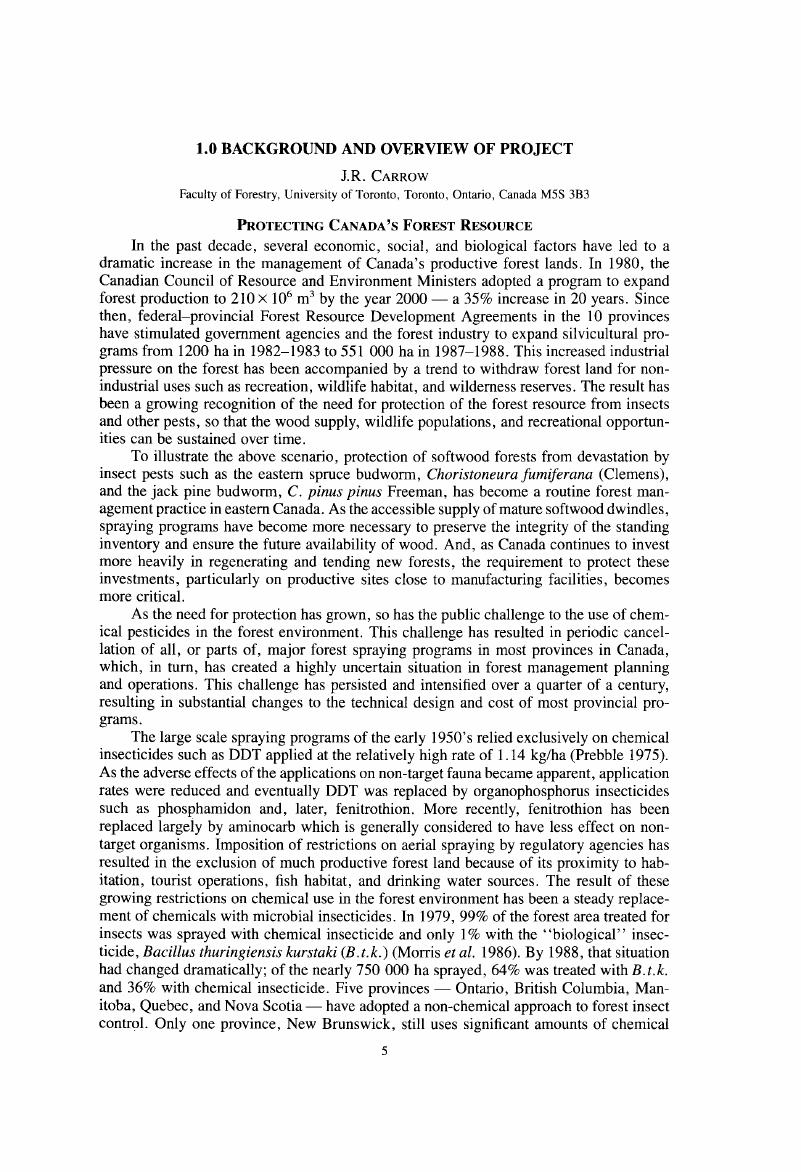No CrossRef data available.
Article contents
1.0 BACKGROUND AND OVERVIEW OF PROJECT
Published online by Cambridge University Press: 31 May 2012
Abstract
An abstract is not available for this content so a preview has been provided. Please use the Get access link above for information on how to access this content.

- Type
- Other
- Information
- The Memoirs of the Entomological Society of Canada , Volume 122 , Supplement S153 , 1990 , pp. 5 - 9
- Copyright
- Copyright © Entomological Society of Canada 1990
References
REFERENCES
Anderson, J.F. 1976. Egg parasitoids of forest defoliating Lepidoptera. pp. 233–249 in Anderson, J.F., and Kaya, H.K. (Eds.), Perspective in Forest Entomology. Academic Press, New York. 428 pp.Google Scholar
Belmont, R.A., and Habeck, D.H.. 1983. Parasitoids of Dioryctria spp. (Pyralidae; Lepidoptera) coneworms in slash pine seed production areas of north Florida, USA. Fla. Ent. 66: 399–407.Google Scholar
Canadian Council of Forest Ministers. 1987. A national forest sector strategy for Canada. Department of Supply and Services, Ottawa, Canada. 22 pp.Google Scholar
Cock, J.J.W. 1985. The use of parasitoids for augmentative biological control of pests in the People's Republic of China. Biocontrol News Info. CIBC 6: 213–223.Google Scholar
Franz, J.M., and Zimmerman, G.. 1984. Problems of forest protection in northern China with special reference to biological control. Anz Schaedlingskd Pflanzenschutz Umweltschutz 57: 81–87.Google Scholar
Georghiou, G.P. 1986. The magnitude of the resistance problem. In Pesticide Resistance: Strategies and Tactics for Management. National Academic Press, Washington, DC.Google Scholar
Gross, H.L. 1985. The impact of insects and diseases on the forests of Ontario. Can. For. Serv. Info. Rep. 0-X-366. 96 pp.Google Scholar
Houseweart, M.W., Jennings, D.T., and Lawrence, R.K.. 1984 a. Field releases of Trichogramma minutum (Hymenoptera: Trichogrammatidae) for suppression of epidemic spruce budworm, Choristoneura fumiferana (Lepidoptera: Tortricidae), egg populations in Maine. Can. Ent. 116: 1357–1366.Google Scholar
Houseweart, M.W., Jennings, D.T., Pease, S.H., and Lawrence, R.K.. 1984 b. Alternate insect hosts and characteristics of forest stands supporting native populations of Trichogramma minutum Riley. Misc. Rep. 300. Univ. Maine at Orono, Coll. For. Resour., Res. Bull. 5. 32 pp.Google Scholar
Hsiao, K.J. 1981. The use of biological agents for control of the pine defoliator, Dendrolimus punctatus (Lepidoptera, Lasiocampidae), in China. Protection Ecol. 2: 297–303.Google Scholar
Jennings, D.T., and Houseweart, M.W.. 1983. Parasitism of spruce budworm (Lepidoptera: Tortricidae) eggs by Trichogramma minutum and absence of overwintering parasitoids. Environ. Ent. 12: 535–540.Google Scholar
Jones, S.L., Morrison, R.K., Ables, J.R., Bouse, L.F., Carlton, J.B., and Bull, D.L.. 1979. New techniques for the aerial release of Trichogramma pretiosum. Southwest. Ent. 4: 14–19.Google Scholar
Jones, S.L., Morrison, R.K., Ables, J.R., and Bull, D.L.. 1977. A new and improved technique for the field release of Trichogramma pretiosum. Southwest. Ent. 2: 210–215.Google Scholar
Li, L.Y. 1984. Research and utilization of Trichogramma in China. Guangdong Entomological Institute Publication. 21 pp.Google Scholar
Morris, O.N., Cunningham, J.C., Finney-Crawley, J.R., Jaques, R.P., and Kinoshita, G.. 1986. Microbial insecticides in Canada: their registration and use in agriculture, forestry and public and animal health. Bull. ent. Soc. Can. Suppl. 18: 1–43.Google Scholar
Morris, R.F. (Ed.). 1963. The dynamics of epidemic spruce budworm populations. Mem. ent. Soc. Can. 31. 332 pp.Google Scholar
Morrison, R.K. 1986. Mass production of Trichogramma pretiosum. Southwest. Ent. Suppl. 8: 21–27.Google Scholar
Patil, B.V., and Thontadarya, T.S.. 1984. Efficacy of the egg parasite, Trichogramma spp. in parasitizing the eggs of the teak skeletonizer, Pyrausta machaeralis Walker (Lepidoptera: Pyralidae). Indian Forester 110: 413–418.Google Scholar
Peng, J-W., Ma, W-Y., Wang, X-L., Zuo, Y-Z., and Wan, X-Q.. 1984. Influence of enhancement of host egg supply on population increment of egg parasites in pine forests. Acta Ent. Sin. 27: 39–47.Google Scholar
Prebble, M.L. 1975. Aerial Control of Forest Insects in Canada. Can. For. Serv. Cat. FO-23/19/1975. 330 pp.Google Scholar
Ridgway, R.L., and Morrison, R.K.. 1985. Worldwide perspective on practical utilization of Trichogramma with special reference to control of Heliothis on cotton. Southwest. Ent. Suppl. 8: 190–195.Google Scholar
Tsankov, G., Chernev, T., Laktarieva, L., Bochev, N., and Ficheva, E.. 1980. The eastern Rhodope strain of Trichogramma isolated from Rhyacionia buoliana, and the possibility of using it in biological control. Gorskostopanska Nauka 17: 56–61.Google Scholar
Varty, I.W. 1984. Testing of parasitoids. pp. 267–272 in Kelleher, J.S., and Hulme, M.A. (Eds.), Biological Control Programmes Against Insects and Weeds in Canada, 1969–1980. Commonwealth Agric. Bureaux, Slough, England. 410 pp.Google Scholar


